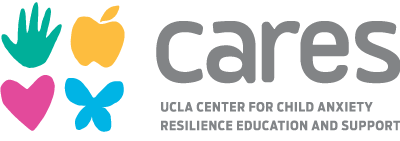Best Practices for Anxiety Treatment
back to Resources for Providers
There are specific diagnostic criteria for each anxiety disorder. Fortunately, the research findings suggest that the best-practice treatment recommendations are largely similar across the different anxiety disorders.
In all cases, diagnoses should be made by a healthcare provider or mental health professional who can help determine whether the symptoms a child is experiencing are temporary responses to a difficult or traumatic life situation, or associated with a specific anxiety disorder. Prior to making any diagnosis, a healthcare provider or mental health professional will conduct a thorough assessment of the individual by asking questions about specific symptoms and exploring whether the individual is experiencing significant distress and/or impairment.
Symptoms
Each anxiety disorder is characterized by its own specific set of signs and symptoms, though all involve fear, worry, excessive distress, and/or interference with daily functioning. Some common signs and symptoms to look for in kids and teens include:
- Excessive discomfort or embarrassment in social situations and/or avoidance of them
- Extreme reluctance to speak in certain settings (e.g., school) despite normal speech at home
- Worry or fear in anticipation of or during separation from parents or loved ones
- Upsetting, intrusive thoughts and ritualized behaviors performed compulsively in an effort to reduce discomfort associated with said thoughts
- Intense discomfort or worry when unable to perform compulsive behaviors
- Panic attacks, or fear of them
- Intense, enduring, and specific fears or phobias (such as of bees, dogs, natural disasters, etc.) that are not developmentally normative
- Excessive need for reassurance and approval from others
- Frequent physical complaints (e.g., headache, stomachache, body aches), even when the child is not sick and does not have a medical problem
These are just some signs that a youth may have an anxiety disorder. These feelings and behaviors can also occur in kids and teens who do not have significant anxiety, but with anxiety disorders, these feelings are more intense, persistent, and causing of distress and/or impairment in functioning. Distress includes feelings of anxiety, upset, or discomfort. Impairment includes difficulties performing developmentally appropriate activities that an individual wants or has to do at home, in school, and/or in social domains.
There are a number of effective treatment strategies that have been shown to reduce symptoms of anxiety in kids and teens.
